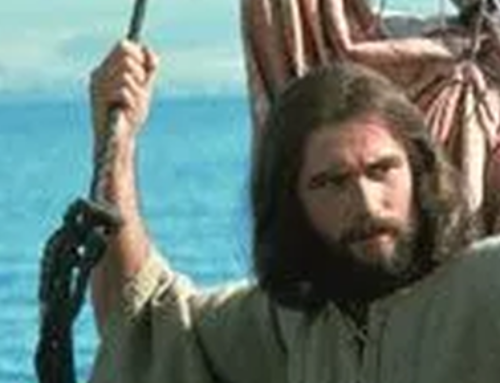This is part 1 of a series of 3 articles about our mental, emotional and spiritual reactions to corona. I intend to show that fear, rituals and the sacrifices we are willing to make are strongly related. First of all: Fear.
An old Dutch saying goes that fear is a bad counselor. But this does not mean that we (could) always behave rationally, or that we are always aware of fear as the motive for much of our actions. Psychology teaches us that we often do not want to accept that emotions play such an important role in our decisions and beliefs, and that we therefore make use of rationalizations. These are seemingly logical explanations for how we behave. In these times of uncertainty surrounding corona, it was to be expected and has also been shown that fear among the population has increased. But this has also increased the tendency to deny this fear (at least as a motivation). Those who pay close attention therefore also hear more rationalisations.
As I write this, wearing mouth masks is not yet mandatory in the Netherlands, except in public transport. This obligation will take effect on 1 December 2020 for public indoor spaces. Even while it is not yet mandatory, many people in our neighborhood wear a mouth mask, but they deny that they do this out of fear. It would only be a conscious choice to protect oneself and others. And no one has the right to do less. Yet hardly anyone has made a calculation of the extent to which wearing a mouth mask actually reduces the risks of infection or of the negative impact on their own physical and mental health and on social interaction.
Both wearing and non-wearing are usually based on a certain trust in politicians and / or experts and / or fellow citizens. Perhaps it would be unreasonable to require people to do more than superficial research themselves. Neither can we expect them to give up their confidence in authoritative sources just like that. But what is striking is that people are so convinced of one thing or the other. Skeptics are banned or ridiculed. They are considered killers. If you could only save one life, you’re crazy if you don’t. Such fierce reactions are often signs of rationalization. Because the fear of uncertainty is too great, one clings to a particular vision, and anyone who threatens that shaky balance is the enemy.
To be fair, the skeptics, which I count myself among, also suffer from anxiety. This is partly due to the fact that we seem to be a minority. You lose friends more easily than those who do and think as they are told. You are also more aware of other (no less serious) risks, such as the long-term consequences of the measures for small businesses, the environment and democracy. When corona is demanding so much attention and money, it is not unreasonable to fear that things will go off the rails in other areas. We rarely weigh up what fighting this virus is worth to us. But for now it is about that fear and concern, which is omnipresent. How do we estimate the danger and how do we respond to it?
Differences in assessment of the risk
Normally we are more anxious the closer the danger is. People who lost a family member or friend to corona therefore usually estimate the danger as greater and are more annoyed by others who remain calm about it. It is a well-intentioned reflex to protect the group, but the effectiveness depends on the real risk and the choices you make next. The problem is, Michiel van der Geest writes in the Volkskrant of 28 February 2020, that fear of a virus is different from fear of a lion. “The problem with a virus is… it’s so elusive, so untraceable to our senses. ‘It’s a fear of what might happen in the future. Because that is hypothetical, anything is possible and that makes it difficult for people to deal with,’ says Postmes.
Van der Geest gives the example of the 2,200 deaths that occur annually in the Netherlands due to accidents in the home. Yet we still walk up and down the stairs every day without thinking. But if about as many people are infected with a virus that in most cases only triggers flu symptoms, we are in all states. And that was also the case in February, when far fewer people were infected.
It was already known that we are bad at comparing risks and other variables. In our opinion it makes no difference whether there are 20 or 200 million stars in the galaxy, while a difference between 2 and 20 can be imagined. Things go wrong with very large and very small numbers. That is why many people are still willing to participate in lotteries, while it is known that on average, everyone loses. With a virus it is exactly the opposite. We want to exclude the chance of a fatal outcome per se, even though that chance is still very small.
Postmes does not go so far as to speak of panic at the slightest thing. However, this year there was behavior that I would like to call semi-rational. People stocked up on masks and cans of soup because hospitals and government agencies also took precautions, and because it was one of the few things they could do. In addition, our perception of the danger in this case was hugely influenced by the images we saw and still see in the media. I am 63 years old and have never seen half of every eight o’clock journal devoted to any virus. We see an uninterrupted tidal wave of people being tested, of viruses floating across the image, of hypodermic needles and hospital beds. The media deftly responds to our concerns, which in turn amplifies those concerns.
Typical patterns and mass formation
The two most well-known stress responses are fight and flight. In addition, you can also freeze and do nothing at all. It is good to remember that these are three patterns or ways, partly formed by our aptitude and upbringing. Our autonomic nervous system, as the word suggests, reacts involuntarily to stress, danger and trauma. Often it has happened before we realize it. It is also worth remembering that groups of people can have such a pattern. One then speaks of mass formation.
According to the Belgian professor of clinical psychology Mattias Desmet mass formation is a dangerous phenomenon that is now occurring. The unreal feeling of having ended up in a bad movie, he says, is one of the signs that society as a whole is in a hypnosis-like state. The view of reality is blurred and irrational group behavior occurs. Mass formation is characterized by a very simplistic story. All the misery in the world comes from one thing, in this case from one or more viruses. And our problems have little or nothing to do (we think) with our own approach to the virus.
Another sign of this mass formation is unreasonableness even in intelligent people and scientists. Normally these people are very critical, but now they also seem to hold a certain belief. A small example from the very many. On the weekend of 7 or 8 November 2020, the second wave seemed to have passed its peak. The number of infections decreased. I immediately told my wife that this could well have been caused by the number of tests being decreased. And yes, the Trouw of 13 November 2020 stated that, according to a spokesperson for the RIVM, it had been “much less busy” at the test locations of the GGD in the past weekend than the days before and after. “As a result, there were also fewer positive results and therefore fewer reports”.
But what does the NRC newsletter “Science” write on November 14? “At the beginning of the week, the number of infections with the new corona virus went down, but now we have been on the rise for a few days”. Here, the number of positive results is simply equated to the number of infections. The media also stubbornly use the wrong graph, also called “the” corona graph, namely that of the number of positive tests instead of the percentage of positive tests. And you can’t just extend that to a percentage of the population, either. I recently had to convince a highly educated friend of mine of this, luckily with success. The knowledge of statistics, even among many scientists, let alone the media and politics, is distressing. Maurice de Hond is an expert in this field, but he only gets more recognition after six months. Under normal circumstances, he would immediately have been taken seriously.
The adaptation syndrome
Recently, among others by Peter Walker, more attention has been paid to a fourth strategy for dealing with danger, namely that of unconscious adaptation, also known as fawning . It is based on the belief that you only matter if you are willing to give up a whole series of needs, rights, preferences and limits. An example of this is Stockholm syndrome. After all, when you are held hostage, there is usually no way to fight or flee. Neutrality is usually not an option either. You will have to adapt. Rationalization “helps” you to adapt to the inevitable. It makes you think that you are doing all this of your own free will. That is also the story you tell others.
Which of these patterns are we dealing with in the case of the corona crisis? What strikes me most is the fighting reflex. “Together we will get the virus under it”. The government also encourages this reflex through the use of language derived from warfare. According to Ira Helsoot, professor of safety management at Radbout University (quoted in the same article in the Volkskrant), people are inclined to “get into a kind of risk-control reflex too quickly”. I think this certainly also applies to the government and experts. “The complicated thing is, says Helsloot, that at some point experts have to let go of the idea that they can contain the virus, and that public servants have to say: now we can do nothing more for you. ‘Ordinary citizens understand that there is such a thing as fate.’ ”
However, they did not say this, because they were in the same hypnotic state after the Chinese discovered that this was a new virus (and strangely enough, 9 months later, they still call it the “new” corona virus). From that moment on, almost no one was able to see corona as a severe flu, which in the Netherlands also kills thousands. According to Helsloot, who researched the swine flu, tens of billions are now spent pointlessly, just like in those days. The damage is now much greater.
The flight response
Strangely enough, our behavior is also a flight. We have already seen that any rationalization is actually a flight from having to acknowledge the emotions that determine our actions. In addition, politicians hide behind experts, who in turn are afraid to give policy advice, but do so anyway. Also physically we have instances of flight, namely hiding in the protection of our homes, behind the face mask, behind perspex and plastic, the one and a half meters, and so on. Others flee from absurdity by clinging to conspiracy theories. I would like to emphasize here that not every theory about a conspiracy or a conflict of interest can be simply ignored. That in itself would be flight. But it’s probably true that some of those theories have gone too far, just as I think the official line has gone too far. So these groups have no reason to blame each other.
Freeze or adjust
A typical example of freezing is: “we’ll see what happens”. Many people are now quite fed up with all the images on the TV, without realizing exactly what is happening. They prefer to focus on what’s left of normal existence, but believe that the virus is the only culprit. Part of the more spiritual audience also falls into this category. They think that by focusing on the good, the negative will disappear on its own. There is an element of truth in this, but without acting the effect will not be forthcoming. I myself expect more from an attitude that does not go along with the illusions of the masses, but also dares to mention what is currently going wrong, namely the one-sided focus on health through restrictive measures and vaccines. Also some peaceful resistance will be needed.
I find it difficult to draw the line between freezing and adjusting. After all, those who avoid the discussion have already adapted in a way. See also this interview about corona trauma and servility. But real adaptation as a means of dealing with stress is more dangerous. Sometimes people become “more catholic than the Pope”. We are talking about mayors and citizens, for example, who urge the government to implement even stricter rules than the experts thought necessary. We saw this, for example, with the non-medical face masks, which were considered of little use by the RIVM, but eventually became more commonplace at the insistence of the population (and on the basis of a few hastily conducted and unrepresentative studies).
We also saw it when a “red team” was set up, after the ordinary OMT did not always come up with the “desired” advice. This team is increasingly being listened to, in stark contrast to an equally large group of scientists who advocate more lenient or different measures. And although one of the criticisms of the OMT was that it mainly contained virologists, which in practice led to a kind of ‘virocracy’, the “red team” also did not contribute to more diversity and attention to the harmfulness of the measures for society as a whole, on the contrary. Face masks had to be mandatory because this happened in other countries. And the belief that lockdowns could bring about some sort of “reset” persisted even after the WHO admitted that these will never be enough to actually get the virus out.
The other two parts of the trilogy will follow shortly.
This post is also available in: Dutch




Leave A Comment